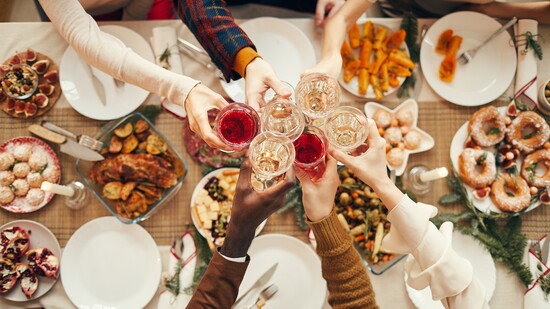The end of the year brings a kaleidoscope of holidays celebrated across the globe, each steeped in unique customs, flavors, and stories. While Christmas, Hanukkah, and New Year’s Eve dominate headlines in many Western countries, countless other traditions unfold in homes and streets worldwide—each offering a glimpse into the values, history, and creativity of its people. Let’s take a journey through some of the most fascinating holiday traditions from around the world.
Christmas: More Than Just Santa and Snow
Christmas, celebrated on December 25th, is one of the most widely recognized holidays. But its traditions vary dramatically depending on where you are.
- Germany: The Advent season is a big deal. Children count down to Christmas with Advent calendars filled with chocolates or small gifts. On December 6th, St. Nicholas visits, leaving treats in shoes left out overnight.
- Philippines: The Giant Lantern Festival in San Fernando showcases dazzling, intricate lanterns that symbolize the Star of Bethlehem. It’s a vibrant, community-driven celebration that lights up the season.
- Iceland: Instead of one Santa Claus, Icelandic children are visited by 13 Yule Lads—mischievous characters who leave gifts or rotten potatoes depending on behavior.
Hanukkah: Light in the Darkness
Hanukkah, the Jewish Festival of Lights, commemorates the rededication of the Second Temple in Jerusalem and the miracle of the oil that lasted eight days.
- Israel: Families light the menorah each night, eat sufganiyot (jelly-filled donuts), and spin dreidels. Public menorah lightings and festive gatherings are common.
- United States: Hanukkah has taken on a more commercial tone, often celebrated with gift-giving, themed decorations, and community events.
- Argentina: Jewish communities blend traditional Hanukkah customs with local flavors, such as empanadas and dulce de leche treats.
Kwanzaa: Honoring African Heritage and Unity
Kwanzaa is a week-long celebration observed from December 26 to January 1, honoring African-American culture, heritage, and values.
- United States: Founded in 1966 by Dr. Maulana Karenga, Kwanzaa is built around seven principles known as the Nguzo Saba, including unity (Umoja), self-determination (Kujichagulia), and collective work and responsibility (Ujima). Each night, families light a candle on the kinara and reflect on one principle.
- Celebrations: Homes are decorated with African art, colorful cloths, and symbols of harvest. Music, poetry, and storytelling play a central role, along with feasts featuring dishes from African and African-American traditions.
- Global Reach: Though primarily celebrated in the U.S., Kwanzaa has inspired cultural events and educational programs in other countries with African diaspora communities.
New Year’s Eve: Out With the Old, In With the New
New Year’s Eve is a global celebration, but the way people ring in the new year varies widely.
- Spain: As the clock strikes midnight, Spaniards eat 12 grapes—one for each chime—to bring good luck for the coming year.
- Japan: The New Year (Shōgatsu) is a time for reflection and renewal. Families clean their homes, visit shrines, and eat osechi ryori—beautifully arranged dishes with symbolic meanings.
- Brazil: Revelers wear white for peace and gather on beaches to offer flowers to Yemanjá, the goddess of the sea, hoping for blessings.
Diwali: The Festival of Lights
Diwali, celebrated by Hindus, Sikhs, Jains, and some Buddhists, marks the triumph of light over darkness and good over evil.
- India: Homes are decorated with oil lamps (diyas), rangoli art, and fireworks. Families exchange sweets and gifts, and Lakshmi, the goddess of wealth, is worshipped.
- Trinidad and Tobago: Diwali is a national holiday, with vibrant street parades, cultural performances, and illuminated homes.
- Nepal: Known as Tihar, the festival includes honoring animals like crows, dogs, and cows, each representing different aspects of life and spirituality.
Lunar New Year: A Time for Family and Fortune
Celebrated in many East Asian countries, Lunar New Year marks the beginning of the lunar calendar and is rich with symbolism.
- China: Red decorations, firecrackers, and lion dances fill the streets. Families gather for a reunion dinner and give red envelopes (hongbao) filled with money to children.
- Vietnam: Known as Tết, the holiday includes ancestral worship, spring cleaning, and festive foods like bánh chưng (sticky rice cakes).
- South Korea: Seollal involves wearing traditional hanbok, playing folk games, and performing rituals to honor ancestors.
Some holiday customs are delightfully unexpected:
- Norway: On Christmas Eve, Norwegians hide their brooms to prevent witches and evil spirits from stealing them.
- Ukraine: Christmas trees are decorated with spider webs, inspired by a folktale where spiders spun webs to help a poor family celebrate.
- Catalonia (Spain): The “Caga Tió” or “pooping log” is a wooden figure that children beat with sticks to release candy and gifts.
In a world that often feels divided, these celebrations remind us of our shared humanity and the beauty of diversity. Whether you’re lighting candles, dancing in the streets, or sharing a meal with loved ones, holiday traditions invite us to pause, celebrate, and connect. So this season, consider exploring a new tradition, learning about another culture, or simply savoring the magic of your own.
Holiday traditions are more than festive fun—they’re expressions of identity, resilience, and community. They connect generations, preserve cultural heritage, and offer moments of joy and reflection.
In a world that often feels divided, these celebrations remind us of our shared humanity and the beauty of diversity.
